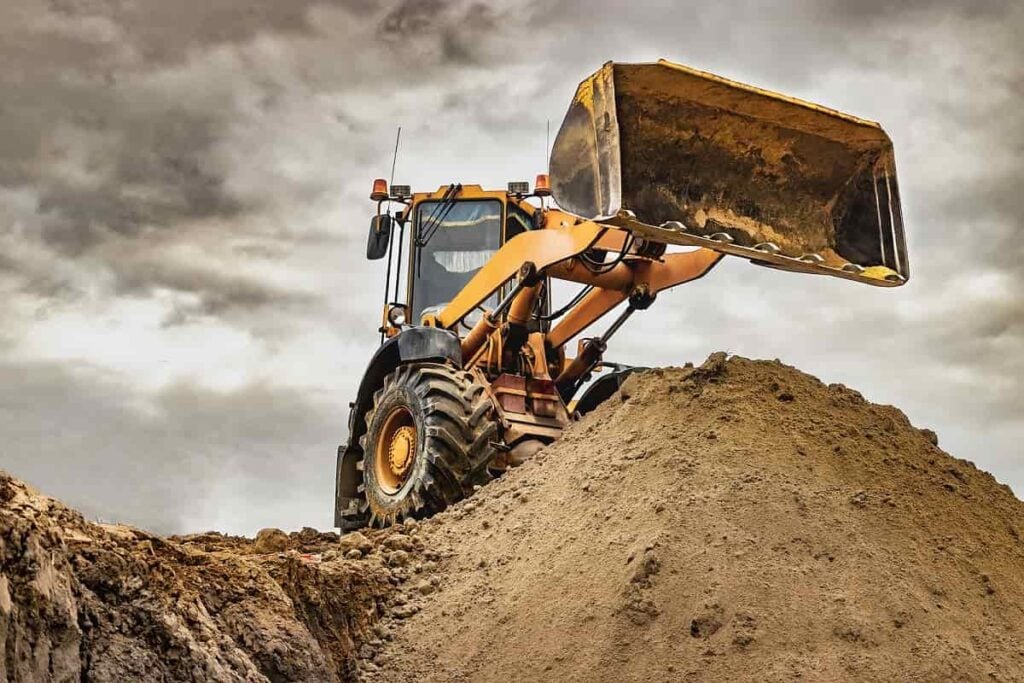Velodyne Lidar – The First LiDAR Pure Play Stock
Table of contents

About four years ago, we first discussed a technology called LiDAR, and in that piece we talked about a startup called Velodyne whose LiDAR products were being used in 25 different self-driving car programs at the time. Today, Velodyne has emerged as a leader in the LiDAR space having advanced surprisingly far in just under four years’ time. Last week, Velodyne announced that they plan to begin trading on the public market using a special purpose acquisition company (SPAC) called Graf Industrial. (Be sure to read our warning on SPACs.) Since there’s no S-1 to pore through, we’re stuck reviewing all the rosy-colored investment decks that accompany the offering.
What is LiDAR?
Just to bring everyone up to speed first, LiDAR (Light Detection And Ranging) is a 3D laser scanning technology that was originally developed in the 1960s for submarine detection. A LiDAR system projects laser beam pulses onto a rotating mirror which then map the distance between objects in the surrounding area to produce a detailed 3D image. Using the speed of light as a baseline, the system detects the time of flight of the light pulses to gauge how far away objects are.
The original use case for LiDAR was autonomous driving, but plenty more applications have emerged in areas such as general mobility, mapping, robotics, and security applications. A company called Velodyne Lidar addresses all of them. (Note that LiDAR is also spelled LIDAR and lidar, but we’re sticking with LiDAR – unless we’re talking about the name of the company, Velodyne Lidar.)
About Velodyne LiDAR
Velodyne’s founder and industry icon, David Hall, invented real-time surround view lidar systems in 2005. It’s no surprise then that the company has made rapid advancements in product development since we last looked at their “puck” back in 2016. Backed by strategic investors that include Ford, Baidu, Nikon, and Hyundai Mobis, Velodyne’s LiDAR solutions now come in multiple form factors that address multiple use cases.

They’ve now sold more than 40,000 units to more than 300 customers having booked $570 million in revenues to date. They also claim a “70% market share” in their investor call, though we’re unsure just what that means. The company recently announced a $100 LiDAR product called Velabit, which is an industry first of its kind. More than 50% of their revenue comes from non-automotive applications. Speaking of revenues, check this out from their investor deck:

Notice how revenues have plummeted over the past three years as the average selling price (ASP) of their products plummets as well. That decrease in product pricing is a result of strong innovation to drive down price and accelerate adoption.
Another interesting slide shows what LiDAR use cases they’re working on with the associated contract revenues:

Looks like “last mile delivery” is going to be a thing, and the footnote states that “one customer accounts for $316.3 million in cumulative projected revenue between 2020 and 2024.” Could that be one of the 8 Delivery Robot Startups for Last Mile Delivery we covered a few years back?
You can read the entire deck yourself, but it’s lacking when it comes to the detail you’ll find in any S-1 filing. There’s a section on “comparables” which is straight out of an MBA valuation class, as the company attempts to justify their valuation against the likes of Cree, Nikola Motors (rolls eyes), Tesla, fuel cell companies Plug Power and Ballard (rolls eyes again), NVIDIA, and Xilinx. As Graf Industrial’s share price goes rocketing into the stratosphere, as all the SPACs we’ve looked at have, this valuation exercise seems rather pointless.
Some of Velodyne’s Competitors
About three years ago, the bright minds at CB Insights put together some great piece of collateral that compared all the formidable LiDAR startups (at least at the time) which we used to produce an article on 9 Startups Developing LiDAR Sensors for Cars. Let’s see what these companies have been doing since we last looked at them.
Innoviz
Three years ago, this Israeli company had taken in $9 million in funding with a planned LiDAR product priced at just $100. Today, they’ve taken in $252 million in funding with backing from SoftBank and a fair number of Chinese firms. They offer two LiDAR offerings, InnovizPro for general use cases, and InnovizOne “specifically designed for automakers and robo-taxi and delivery companies requiring an automotive-grade, mass-producible solution to achieve autonomy.”

The latter will go into production next year (samples available now) and they’re apparently in bed with BMW.
Quanergy
The self-described “global leader in 3D sensing and one of the first companies to pioneer 3D LiDAR for commercialization,” took in more undisclosed funding since 2017 with the last round being a Series C in October 2018. The company’s LiDAR-powered “Flow Management Platform” enables reliable and real-time tracking of people and vehicles for security, and smart cities and spaces applications. They serve more than 30 industry verticals including “LiDAR for social distancing.” Liberal use of the term “AI” throughout their site implies that they’re focused as much on software as hardware.
Luminar
Last we looked, Luminar had taken in a seed round to engineer their own lasers, chips, and receivers from scratch, without materials from third-parties. As of today, they’ve taken in $250 million in disclosed funding from investors that include Volvo, Peter Thiel, and Corning. An article by IEEE Spectrum talks about how Volvo and Luminar plan to deliver “genuine hands-free, eyes-off-the-road highway driving beginning in 2022.” That Level 3 capability would be an industry first.
Oryx Vision
Originally claimed that their LiDAR method “has a million times the sensitivity of traditional LiDAR,” but shut down last year after raising $67 million. According to the CEO, the autonomous vehicle market is maturing at a slower rate than previously expected, so they returned $40 million to investors and closed shop.
Hesai
The Chinese startup in our list went from a fresh round of $16 million back in 2017 to just over $231 million in funding today from names like Bosch and Baidu. Like the other firms we’ve looked at, they’re also “the global leader” in LiDAR with a suite of innovative sensor solutions that they’re selling to customers in 20 countries.
LeddarTech
Last time we checked, LeddarTech had taken in $16 million to develop solid-state LiDAR that claimed a 25X improvement in sensitivity over other LiDARs. Today, they’ve taken in just over $183 million in funding and sold over 40,000 units. Just yesterday, they announced the acquisition of an Israeli firm called VAYAVISION which had taken in just under $11 million to provide environmental perception software solutions for autonomous vehicles.
TetraVue
After taking in $10 million in funding from the likes of Samsung and Foxconn, they appear to have gone bankrupt and their website no longer functions.
Blackmore
After taking in $21.5 million to develop just one semiconductor chip that mounts inside your vehicle’s front grill, Blackmore was acquired last year by Aurora, a rather secretive company that’s now taken in $690 million in funding from names like Amazon, Shell, Sequoia, and Hyundai. The lead product from Aurora is called “Aurora Driver,” a hardware/software platform that can be installed in different types of cars to make them drive autonomously.
Many Other LiDAR Competitors
Based on what we’ve seen so far, LiDAR is a game of hero or zero where every survivor claims they are “the leader.” Dozens of startups are working on LiDAR offerings. We’ve only mentioned some of Velodyne’s competitors, and we usually find out which ones are formidable by looking at the S-1 filing where the company spells them out. With a SPAC filing, there’s no such thing. An article by Wired earlier this year titled “There Are Too Many Lidar Companies. They Can’t All Survive,” says the following:
Of late, the lidar industry has shown signs of consolidation, and some see a shakeout coming. Shahin Farshchi, a partner at venture capital firm Lux who invests in lidar company Aeva—which recently showed off a lidar system that fits on a single chip—wagers that for every 10 companies, three will fold, four will be acquired for modest sums, and the remainder will produce impressive returns.
Credit: Wired
When we talk about SPACs, those “impressive returns” aren’t necessarily favoring long-term investors. The SPAC Velodyne is merging with already traded up over +100% on news of the acquisition, and the deal isn’t even expected to close until sometime in the calendar third quarter. The pundits do nothing to inform investors, favoring clickbait titles that say nothing about the real risks you’re exposed to.

Says the article’s author, “I think the answer is that after last week’s big price jump, auto investors are reassessing where it — along with some other future-tech transportation stocks, including Nikola’s — fits into their portfolios.” Yes, the portfolio fit problem, that must be it.
Conclusion
LiDAR is an exciting technology and Velodyne is an exciting company with traction in the form of a customer list that includes nearly all of the leading global automotive original equipment manufacturers (OEMs). Of course, not everyone agrees with that. Tesla vehicles don’t use LiDAR, and the company’s fearless leader has stated that “anyone who uses LiDAR is doomed.”
Regardless of LiDAR’s potential, allowing the Robinhood speculator types free reign to pump this stock up for no reason other than hype does a disservice to those who want to invest in Velodyne. It’s a shame, because the company seems like it has some real potential. Maybe after the dust has settled it will be worth another look.
If successful, shares of Velodyne will trade under a new ticker symbol VLDR
Sign up to our newsletter to get more of our great research delivered straight to your inbox!
Nanalyze Weekly includes useful insights written by our team of underpaid MBAs, research on new disruptive technology stocks flying under the radar, and summaries of our recent research. Always 100% free.
















Its a good thing they have 50 percent of revenue in 2024 guaranteed and an established 75% market share 🙂
The number the company used in their investor call is 70%, but as we asked in the article, 70% of what? They have 70% market share for all 7 use cases they’re targetting? Seems unlikely. An S-1 would have spelled that out. As for contract revenues, those aren’t guaranteed. Companies can go banckrupt. How diversified are their revenue streams by customer? Again, an S-1 would spell that out.
You can read the investor deck for their aspirations of greatness. We’re interested in identifying risks, like the fact shares are being pumped up before the deal has even been inked. Sounds like a great company, but there are still some concerns and unanswered questions.
Thank you for the comment!